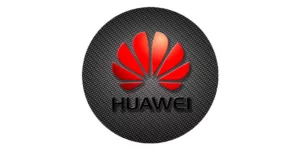Before the US went to war with Huawei, Huawei was like most companies expanding into personal technology. They were happy to license technology from US companies to build their products. This prior behavior made them more like Samsung than Apple, which rabidly works to own its entire technology stack. But sanctions forced Huawei to pivot hard to use a next-generation operating system (OS) they had under development for TVs, Harmony, and expand its hardware technology so it could stay in business. This US threat ironically forced the company into the far more insular Apple vertical integration model. But Huawei has some interesting differences from Apple. These differences allow Huawei to outperform Apple in China and provide a more consumer and, most importantly, developer-friendly set of products to the world.
Let’s talk about the potential for Huawei’s Harmony OS and why it could eventually bypass the iOS in developer support and market penetration.
Apple vs. Huawei model
Apple was created along the lines of the old IBM model of doing everything and using lock-in to create a highly reliable revenue stream that most other firms envied. However, this model was also instrumental to IBM’s near-death. This near-death experience occurred because, over time, it focused IBM on more creative ways to mine customers for revenue while cutting costs, which created a growing disparity between the ever-lower value the customers received and the ever-higher costs they paid.
Financial benefits flow to Apple’s reserves, top executives, and stockholders, not employees or customers. This business model is hardly unique to Apple in the US. While Apple continues to enjoy relatively high customer satisfaction, customer growth has all but stalled with revenue increases tied mainly to price increases or new services with ever-higher fees. Developers, who are foundational to Apple’s position and success, are often treated poorly. Apple often appears to be at war with their developers rather than supporting them. Apple seems to believe that all developer profits should instead be Apple’s.
In contrast, Huawei is China, not U.S.-based, making them much closer to the Chinese market, one of the largest and fastest-growing over the last decade. Huawei is majority-owned by its employees, not investment firms, and compensation across Huawei appears less stratified between executive staff and line workers. Huawei is a company that aggressively backs Open Source, and its Harmony OS is shared with other large Chinese companies like Xiaomi and is far more consistent with other newer-model companies like Qualcomm in that way. Finally, Huawei aggressively recruits developers rather than finding ever more creative ways to make their revenue, making them, potentially, a far better partner for new business than Apple has become.
Harmony OS
Harmony is an OpenSource microkernel modern OS designed from the start to scale from tiny IoT devices to PCs. Currently, Huawei products range from their new Huawei Watch 3 to new electric cars (Huawei has entered this market well ahead of Apple) and far more different Smartphones than Apple currently has. While a US market for Harmony is unlikely until the US removes Huawei’s sanctions, in Europe and Asia, the company’s market is growing. It projects to grow significantly in the near term and is likely to increase focus, potentially outperforming Samsung’s Tizen platform.
Harmony may be the first genuinely effective scalable operating system to ship at significant volumes. Harmony devices’ interoperability potential and consistency across different hardware platforms assure unmatched revenue potential for developers, which other older operating systems, like the macOS and iOS, can not provide.
Finally, because Harmony is one operating system, integrating and sharing data across platforms that use Harmony is far easier than trying to do the same thing with different operating systems, particularly if those competing vendors own those platforms. (Try to get an Apple Watch to work with an Android phone, for instance).
Wrapping up:
Thanks to US Sanctions, Huawei is modeling itself like an updated Apple. It is far more focused on employee participation, growing its market, and current generation initiatives like microkernel architectures, massive cross-platform support, licensing, and open source. It still owns quality top to bottom, but it isn’t taking revenue and profits from suppliers or developers. Instead, Huawei focuses on growing market share, not mining existing customers for money and making them potentially less risky outside of the US than Apple.
It is interesting to note that while the actions against it may have been motivated by an effort to eliminate a Chinese Apple competitor, the strategic result is now a far stronger one. But, if you are thinking of spending platforms, and mainly if you are sick of working with Apple as a developer and would like to expand in Asia and Europe, Huawei’s Harmony platform may be worth a look.








